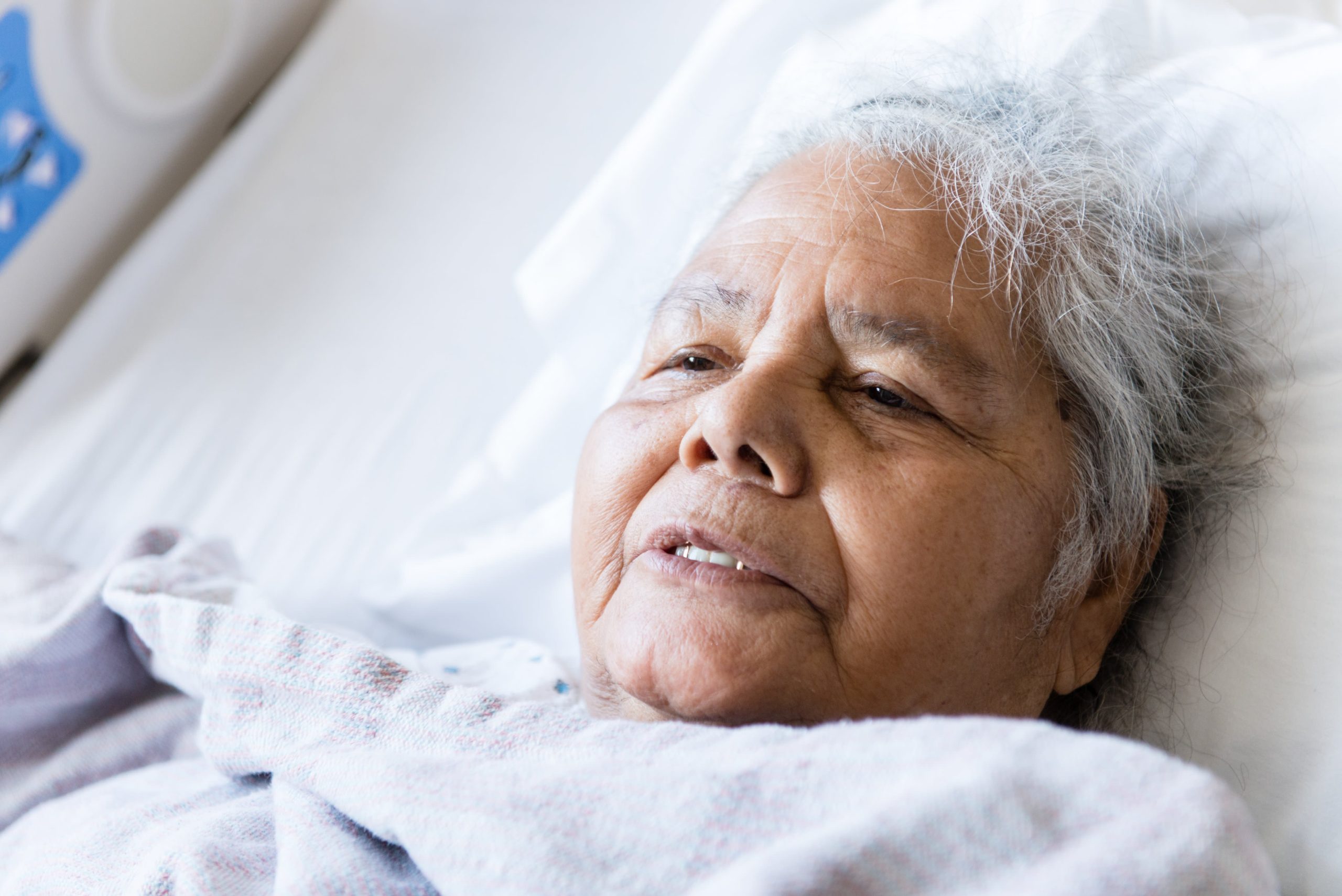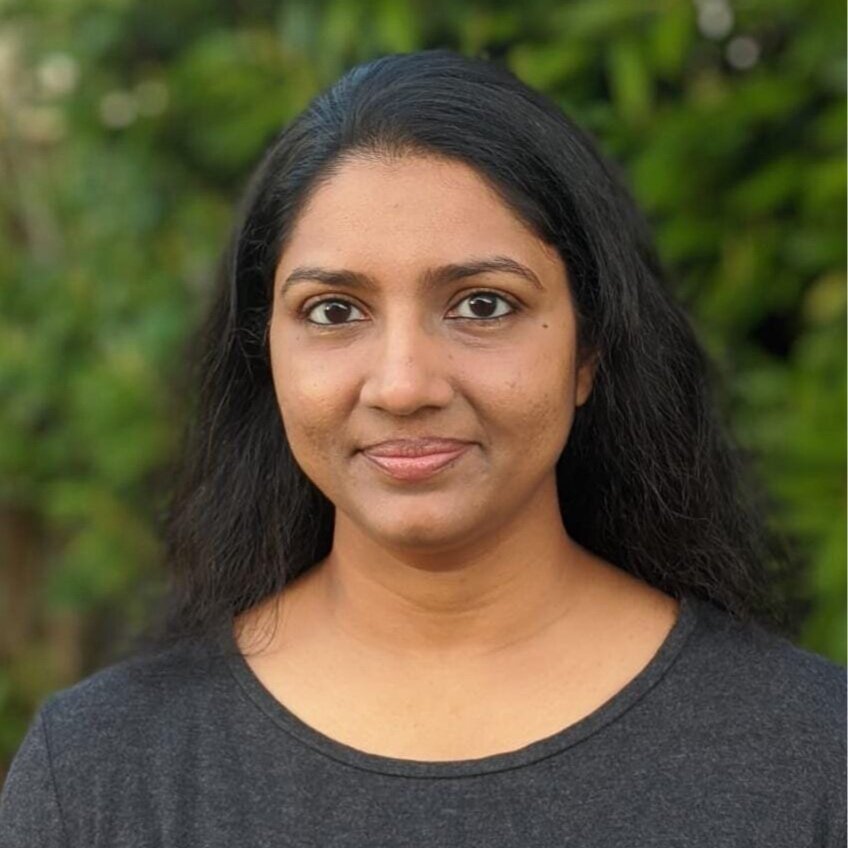
Older people are seldom included in clinical trials of drugs and other therapies, which means that, when doctors treat older cancer patients, too often they have to make decisions about what to do with little evidence from trials to go on. Journalist Jyoti Madhusoodanan explores the problem in this story, originally published by the digital magazine Undark on July 6, 2023. Her reporting was supported in part by a fellowship from the Gerontological Society of America, the Journalists Network on Generations, and the Silver Century Foundation.
In October 2021, 84-year-old Jim Yeldell was diagnosed with stage 3 lung cancer. The first drug he tried disrupted his balance and coordination, so his doctor halved the dose to minimize these side effects, Yeldell recalled.
In addition, his physician recommended a course of treatment that included chemotherapy, radiation and a drug targeting a specific genetic mutation. This combination can be extremely effective—at least in younger people—but it can also be “incredibly toxic” in older, frail people, said Elizabeth Kvale, MD, who is a palliative care specialist at Baylor College of Medicine and also Yeldell’s daughter-in-law.
Older patients are often underrepresented in clinical trials of new cancer treatments, including the one offered to Yeldell. As a result, he only learned of the potential for toxicity because his daughter-in-law had witnessed the treatment’s severe side effects in the older adults at her clinic.
This dearth of age-specific data has profound implications for clinical care, as older adults are more likely than younger people to be diagnosed with cancer. In the United States, approximately 42 percent of people with cancer are over the age of 70—a number that’s poised to grow in the years to come—and yet they comprise less than a quarter of the people in clinical trials to test new cancer treatments. Those who do participate are often the healthiest of the aged, who may not have common age-related conditions such as diabetes or poor kidney or heart function, said Mina Sedrak, MD, a medical oncologist and the director of the Cancer and Aging Program at the University of California, Los Angeles.
For decades, clinical trials have tended to exclude older participants for reasons that range from concerns about preexisting conditions and other medications to participants’ ability to travel to trial locations. As a result, clinicians have little way of being certain that approved cancer drugs will work, as predicted in clinical trials, for the people most likely to have cancer. This dearth of data means that older cancer patients must decide if they want to pursue a treatment that might yield fewer benefits—and cause more side effects—than it did for younger people in the clinical trial.
This evidence gap extends across the spectrum of cancer treatments—from chemotherapy and radiation to immune checkpoint inhibitors—with sometimes dire results. Many forms of chemotherapy, for example, have proven to be more toxic in older adults, a discovery that came only after the drugs were approved for use in this population. “This is a huge problem,” Sedrak said. In an effort to minimize side effects, doctors will often tweak the dose or duration of medications that are given to older adults, but these physicians are doing this without any real guidance.
Despite recommendations from funders and regulators and extensive media coverage, not much has changed in the past three decades.
“We’re in this space where everyone agrees this is a problem, but there’s very little guidance on how to do better for older adults,” Kvale said. “The consequences in the real world are stark.”
Chemotherapy causes potentially life-threatening side effects in about half of patients over 65 who have advanced cancer.
Postapproval studies of cancer drugs have helped shed light on the disconnect between how these drugs are used in clinical trials and how they are used in clinics around the country.
For example, when physician and cancer researcher Cary Gross, MD, of Yale University set out to study the use of a new kind of cancer drug known as an immune checkpoint inhibitor, he knew that most clinicians were well aware that clinical trials overlooked older patients. Gross’ research team suspected that some doctors might be wary of offering older adults the treatments, which work by preventing immune cells from switching off, thus allowing them to kill cancer cells. “Maybe they’re going to be more careful,” he said, and offer the intervention to younger patients first.
But in a 2018 analysis of more than 3,000 patients, Gross and his colleagues found that within four months of approval by the US Food and Drug Administration, most patients eligible to receive a class of immune checkpoint inhibitors were being prescribed the drugs. And the patients receiving this treatment in clinics were significantly older than those in the clinical trials.
“Oncologists were very ready to give these drugs to the older patients, even though they’re not as well represented,” Gross said.
In another analysis, published this year, Gross and his colleagues examined how these drugs helped people diagnosed with lung cancer. The team found that the drugs extended the life of patients under the age of 55 by a median of five months, but only by a month in those over the age of 75.
The evidence doesn’t suggest checkpoint inhibitors aren’t helpful for many patients, said Gross. But it’s important to identify which particular populations are helped the most by these drugs. “I thought that we would see a greater survival benefit than we did,” he said. “It really calls into question how we’re doing research, and we really have to double down on doing more research that includes older patients.”
Most clinical trials no longer have an upper age limit, but older participants are still scarce.
People over the age of 65 don’t fare well with other types of cancer treatments, either. About half of older patients with advanced cancer experience potentially life-threatening side effects with chemotherapy, which can lead oncologists to lower medication doses, as in Yeldell’s case.
There’s a strong connection between the lack of evidence from clinical trials and worse outcomes in the clinic, according to Kvale. “There’s a lot of enthusiasm for these medicines that don’t seem so toxic up front,” Kvale said, “but understanding where they do or don’t work well is key, not just because of the efficacy, but because those drugs are almost toxically expensive sometimes.”
This financial aspect is especially critical, said Gross, because Medicare benefits must cover new cancer treatments that are FDA-approved. “It’s a little bit crazy that Medicare is required to cover these drugs if we don’t know whether they work in the older population,” he said.
Since the earliest reports of this data gap, regulators and researchers have tried to fix the problem. Changes to clinical trials have, in principle, made it easier for older adults to sign up. For instance, most studies no longer have an upper age limit for participants. Last year, the FDA issued guidance to industry-funded trials, recommending the inclusion of older adults and relaxing other criteria, such as measures of kidney function, to allow for participants with natural, age-related declines. Still, the problem persists.
When Sedrak and colleagues set out to understand why the needle had moved so little over the past few decades, their analysis found a number of explanations, beginning with eligibility criteria that may inadvertently disqualify older adults. Physicians may also be concerned about their older patients’ ability to tolerate unknown side effects of new drugs. Patients and caregivers shared these concerns. The logistics of participation can also prove problematic.
“But of all these, the main driving force, the upstream force, is that trials are not designed with older adults in mind,” Sedrak said. Clinical trials tend to focus on survival, and while older adults do care about this, they often have other motivations—and concerns—when considering treatment.
Most clinical trials are geared toward measuring improvements in health: they may track the size of tumors or months of life gained. These issues aren’t always top of mind for older adults, said Sedrak. He said he’s more likely to hear questions about how side effects may influence the patient’s cognitive function, ability to live independently and more. “We don’t design trials that capture the end points that older adults want to know,” he said.
One way doctors can make better decisions in treating older cancer patients is to take into account their biological—rather than just their actual—age.
As a group, older adults do experience more side effects, and sometimes they are so severe that the cure rivals the disease. In the absence of evidence from clinical trials, clinicians and patients have tried to find other ways to predict how a patient’s age might influence their response to treatment. In Yeldell’s case, discussions with Kvale and his care team led him to choose a less intensive course of treatment that has kept his cancer stable since October 2022. He continues to live in his own home and exercise with a trainer three times a week.
For others trying to weigh their choices, researchers are developing tools that can create a more complete picture by accounting for a person’s physiological age. In a 2021 clinical trial, geriatric oncologist Supriya Mohile, MD, of the University of Rochester and her colleagues tested the use of one such tool, known as a geriatric assessment, on the side effects and toxicity of cancer treatments. The tool assesses a person’s biological age based on various physiological tests.
The team recruited more than 700 people with an average age of 77 who were about to embark on a new cancer treatment regimen with a high risk of toxicity. Half the participants received guided treatment management recommendations based on a geriatric assessment, which their oncologists factored into their treatment decisions. Only half of this group of patients experienced serious side effects from chemotherapy, compared to 71 percent of those who didn’t receive specialized treatment recommendations.
This type of assessment can help avoid both undertreatment of people who might benefit from chemotherapy and overtreatment of those at risk of serious side effects, Mohile said. It doesn’t compensate for the data on older adults that’s missing from clinical trials, but in the absence of that evidence, tools such as geriatric assessment can help clinicians, patients, and families make better-informed choices.
“We’re kind of going backwards around the problem,” Mohile said. Although geriatric oncologists recognize the need for better ways to make decisions, she said, “I think the geriatric assessment needs to be implemented until we have better clinical trial data.”
Since 2018, the American Society of Clinical Oncology has recommended the use of geriatric assessment to guide cancer care for older patients. But clinicians have been slow to follow through in their practice, in part because the assessment doesn’t show any cancer-specific benefits, such as tumors shrinking or people living longer. Instead, the tool’s main purpose is to improve quality of life.
“We need more prospective therapeutic trials in older adults, but we also need all of these other mechanisms to be funded,” said Mohile. “So we actually know what to do for older adults who are in the real world.”

Jyoti Madhusoodanan grew up in India but left there in 2005 to earn a PhD in microbiology in Buffalo, NY. “But reviewers kept telling me that my thesis and drafts of scientific papers had too much story in them,” she says. She took the hint and enrolled in a science communication program. Today, she’s a science journalist and writes for publications like the New York Times, Science and Nature. She lives in Portland, OR.


